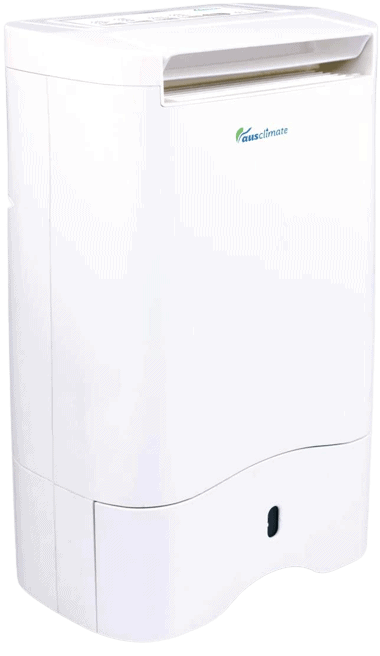For many homeowners, the decision to purchase a dehumidifier is often a difficult one. With so many options on the market, it can be hard to decide which type of dehumidifier will best suit your needs. This article breaks down the difference between refrigerant dehumidifiers and desiccant dehumidifiers and helps you make an informed decision
What is a refrigerant dehumidifier (also called Compressor)?
A refrigerant dehumidifier is a type of dehumidifier that uses a refrigerant to remove moisture from the air. They are also called "compressor dehumidifiers".
How does a refrigerant dehumidifier work?
A refrigerant dehumidifier works by drawing in air from the room and passing it over a cold coil.
As the air passes over the cold coil, the water in the air condenses and is collected in a bucket or drain.

An example of a refrigerant/compressor dehumidifier.
They are best suited for when indoor temperatures are consistently over 20 degrees celsius.
Refrigerant dehumidifiers are very effective at removing moisture from the air and can be used in a variety of settings, including homes, offices, and industrial buildings. They are also relatively inexpensive to purchase and operate.
What are the benefits of a refrigerant dehumidifier?
There are several benefits to using a refrigerant dehumidifier:
- Great in temperatures over 20 degrees, in climates like Queensland or the Northern Territory.
- They are very effective at removing moisture from the air.
- They are relatively quiet.
- They do not require any maintenance.
What is a desiccant dehumidifier?
A desiccant dehumidifier is a type of dehumidifier that uses a desiccant, or drying agent, to remove moisture from the air.
How does a desiccant dehumidifier work?
A desiccant dehumidifier works by drawing in air from the room and passing it over a desiccant-coated wheel. As the air passes over the wheel, the water in the air is absorbed by the desiccant. The dry air is then passed back into the room and the wet air is vented outside.

An example of a desiccant dehumidifier.
If your home's temperature is consistently below 20°C, the Desiccant dehumidifier is an excellent choice. This is because in these lower winter temperatures, they preform really well despite their lower capacity.
Desiccant dehumidifiers are very effective at removing moisture from the air and can be used in a variety of settings, including homes, offices, and industrial buildings. They are also relatively quiet and do not require any maintenance.
What are the benefits of a desiccant dehumidifier
There are several benefits to using a desiccant dehumidifier:
- Great choice for cooler tempreatures, such as in Victoria or Tasmania.
- They are very effective at removing moisture from the air.
- They are relatively quiet.
- They do not require any maintenance.
The difference between the two types of dehumidifiers
The main difference between refrigerant and desiccant dehumidifiers is the way they work. Refrigerant dehumidifiers use a refrigerant to remove moisture from the air, while desiccant dehumidifiers use a drying agent, or desiccant, to remove moisture from the air.
Refrigerant dehumidifiers are less expensive to purchase and operate than desiccant dehumidifiers, but they are not as effective at removing moisture from the air.
Desiccant dehumidifiers are more expensive to purchase and operate than refrigerant dehumidifiers, but they are more effective at removing moisture from the air.
So, which type of dehumidifier is right for you?
If you need a model that can handle high humidity levels that will work well in cooler temperatures, then a desiccant dehumidifier is the way to go. However, if you're looking for an affordable option with lower maintenance requirements, and works well in hotter climates then a refrigerant dehumidifier may be the better choice.
Whichever type you choose, make sure to get a model that's the right size for your needs - too small and it won't be effective, too large and it will use more energy than necessary.
Conclusion
In conclusion, there are pros and cons to both refrigerant and desiccant dehumidifiers. It really comes down to personal preference and what your specific needs are. Make sure to read our guide on the best dehumidifiers in Australia to view our top picks.
We hope this article has helped you understand the difference between these two types of dehumidifiers and make an informed decision about which one is right for you.
